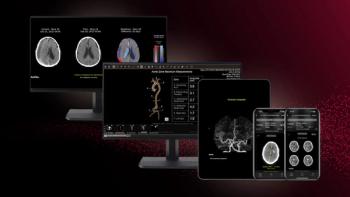
SNM advertisement asks Congress to restore DOE funding
The SNM is ratcheting up political pressure on Congress to restore $20 million in Department of Energy research funding that it considers crucial to the survival of nuclear medicine.
The SNM is ratcheting up political pressure on Congress to restore $20 million in Department of Energy research funding that it considers crucial to the survival of nuclear medicine.
The professional society placed a full-page, full-color ad in the Sept. 30 issue of Roll Call, a daily newspaper of Congressional news widely read by legislators and their staffs.
The ad features a group of scientists with turned backs, walking away. The headline says, "Say goodbye to the next Einstein, Salk or Madame Curie," in a reference to world-class scientists that the SNM leaders fear will not pursue basic discoveries relevant to nuclear medicine because of diminished DOE involvement.
The
The SNM has lobbied for the restoration of funding since the Bush administration cut $23 million from the 2006 federal budget for basic research at the DOE. The cuts signaled to many nuclear medicine researchers an end to DOE's 50-year involvement in nuclear medicine science.
Congress first began funding nuclear medicine research with the passage of the Atomic Energy Act of 1954. DOE laboratories and researchers are widely credited with many discoveries and innovations that laid the basis for clinical nuclear medicine practice. They helped develop imaging instrumention, such as SPECT and PET, and discover and develop clinical applications for technetium-99m and fluorine-18 FDG, the mainstay isotopes and radiopharmaceuticals used in routine clinical practice.
There has been some recent movement on Capitol Hill to restore funding. The Senate Energy and Water Appropriation Committee raised the DOE budget for medical applications and medical science by $20 million, specifically for nuclear medicine research. The committee also noted its disappointment in the DOE for eliminating funding for nuclear medicine research for each of the past three years.
The issue was not addressed in the budget passed by the House Appropriations subcommittee on energy and water development, according to Mike Peters, a healthcare policy analyst with the SNM. However, subcommittee chair Peter Visclosky (D-IN) and Appropriations Committee chair David Obey (D-WI) have signed a letter addressed to House colleagues supporting funding restoration.
The issue may be ultimately addressed in joint House-Senate budget reconciliation talks later this year.
The SNM has accelerated efforts to restore the fund since publication in September of a National Academy of Sciences report on the state of nuclear medicine science. It stressed the importance of the DOE laboratories for the recruitment and training of nuclear physicists and chemists deemed crucial to carrying on the work of scientists who are retiring from the field.
The NAS report called for enhanced federal commitment to nuclear medicine research and recommended that DOE and the National Institutes of Health convene expert panels to identify critical national needs for training nuclear medicine scientists.
"This report confirms that funding for this nation's basic research program must be restored, or future live-saving diagnostic and treatment procedures could be lost to all Americans," said SNM president Dr. Alexander J. McEwan in a release.
For more information from the Diagnostic Imaging archives:
Newsletter
Stay at the forefront of radiology with the Diagnostic Imaging newsletter, delivering the latest news, clinical insights, and imaging advancements for today’s radiologists.



























